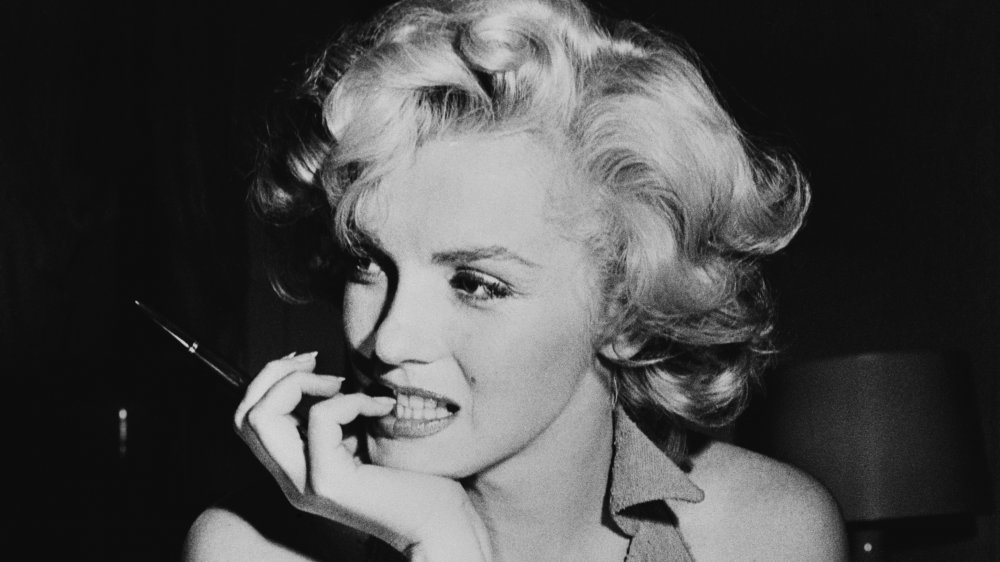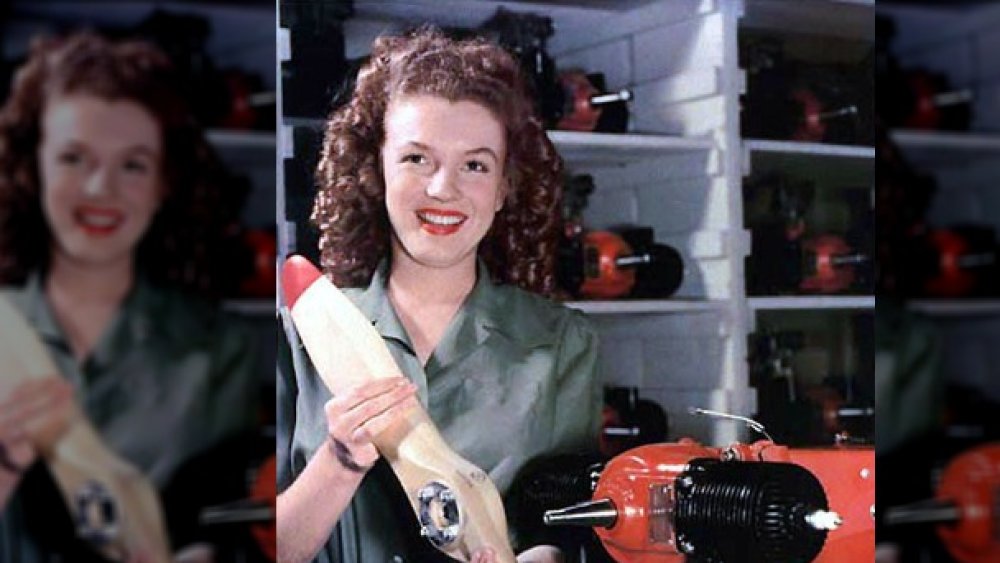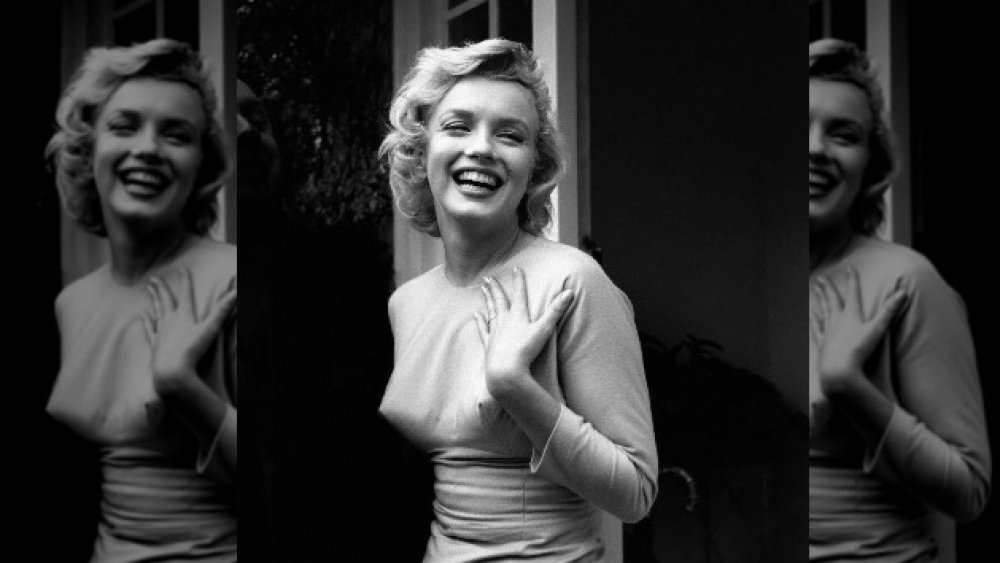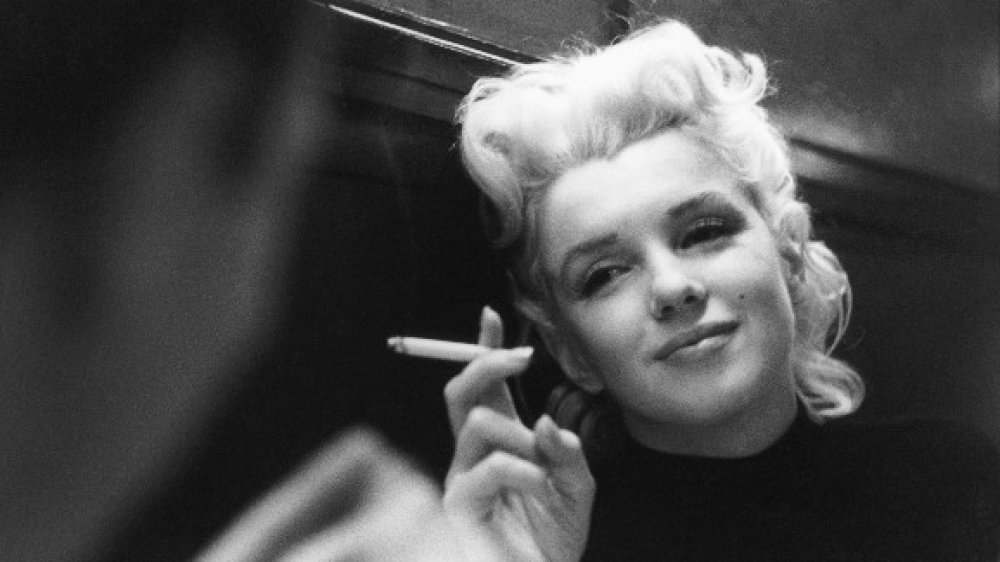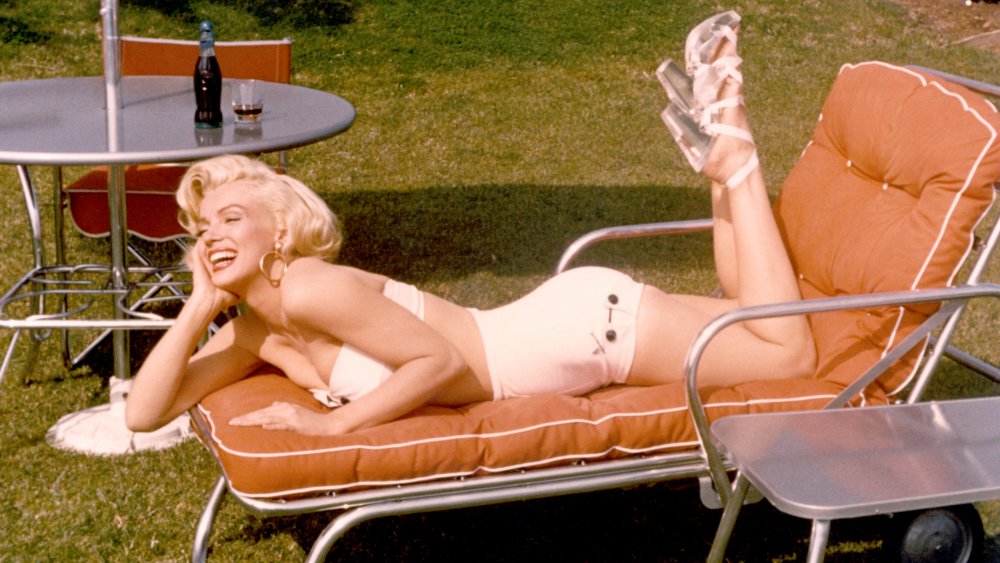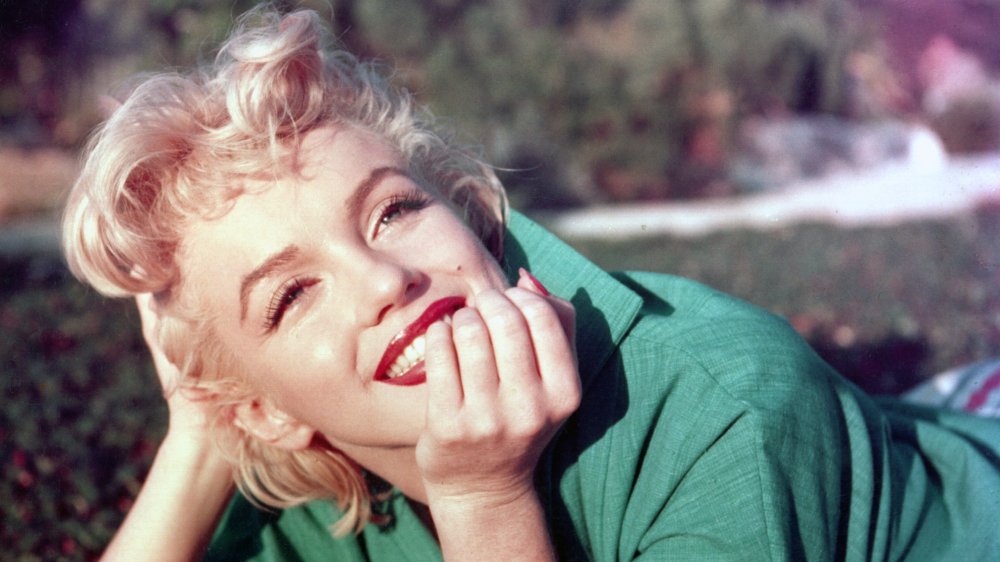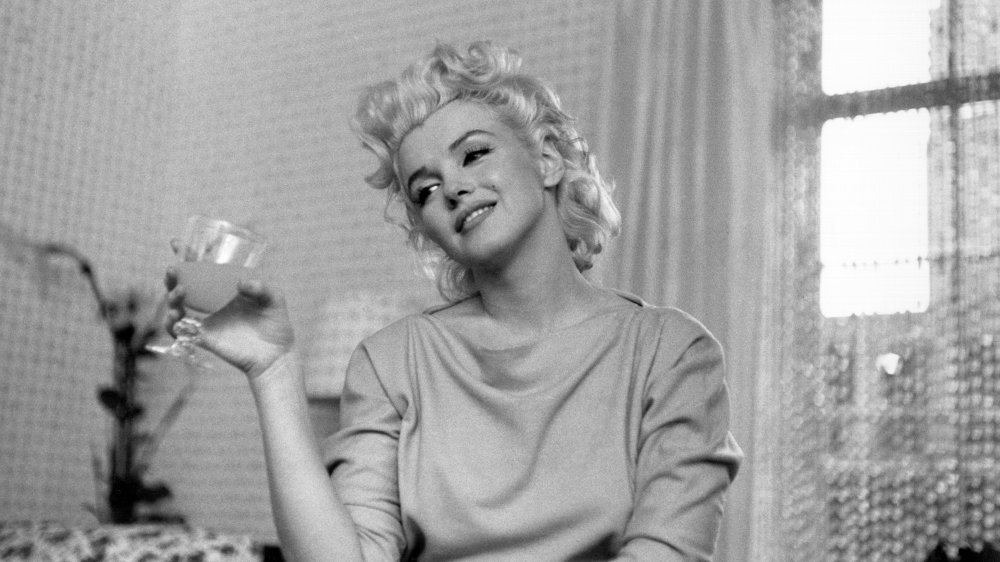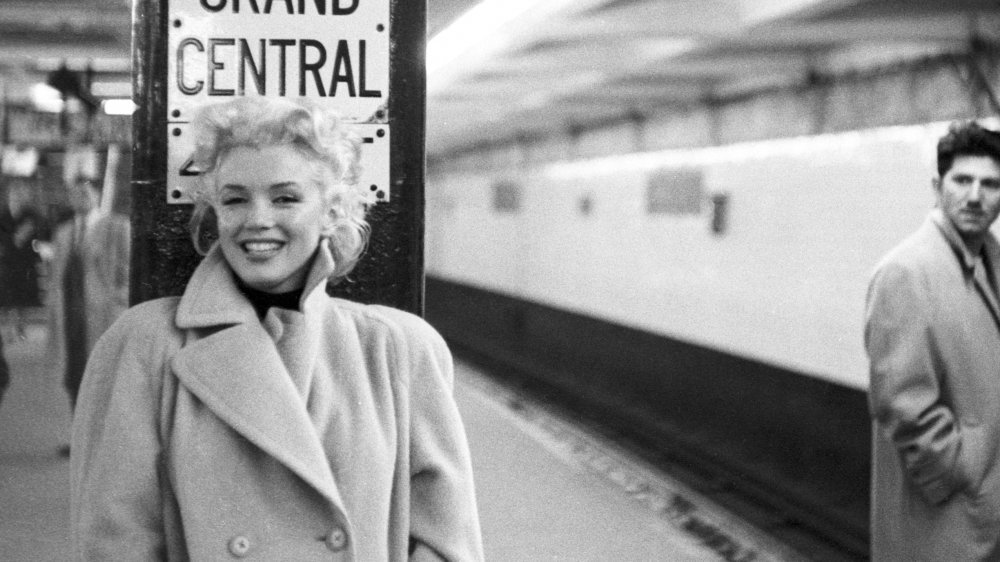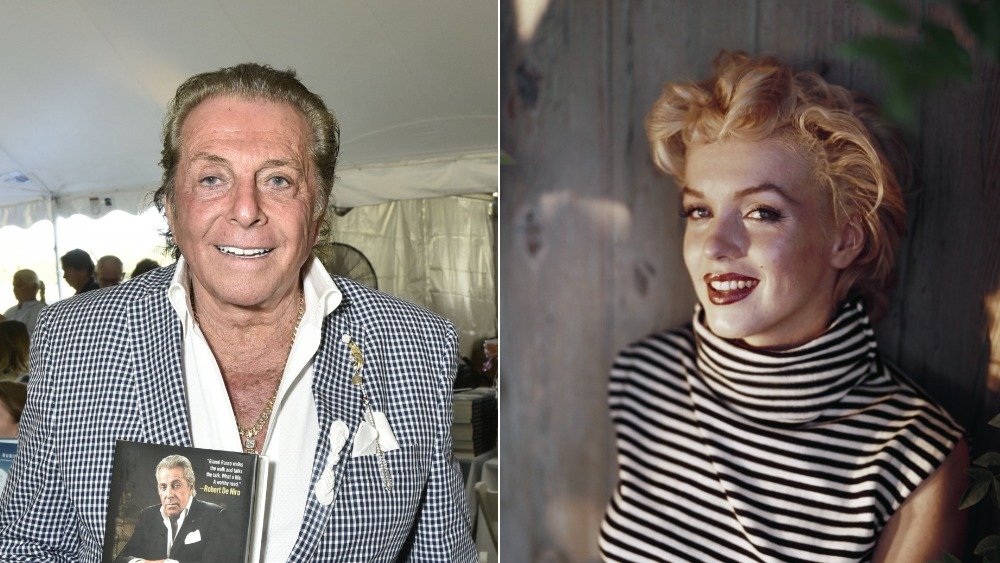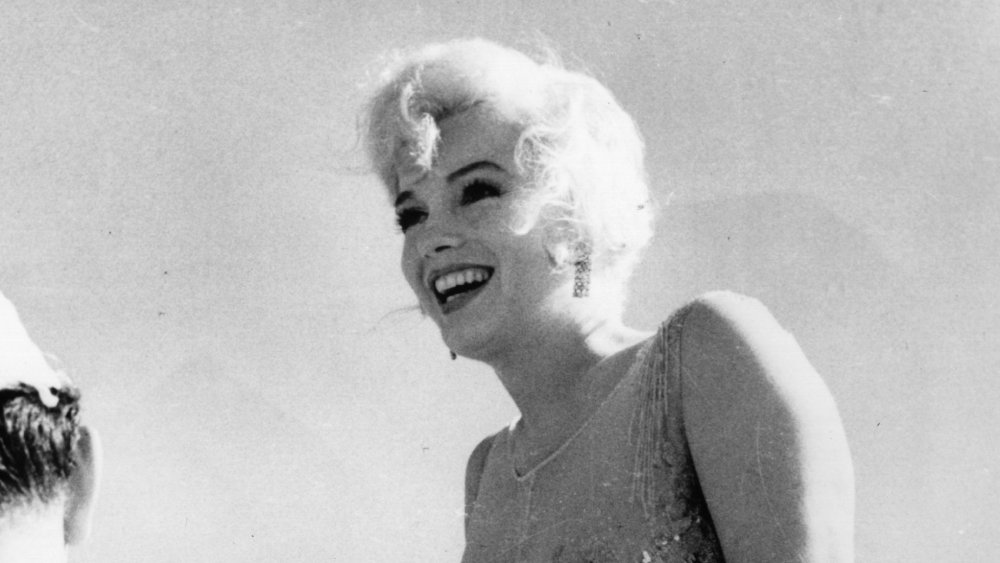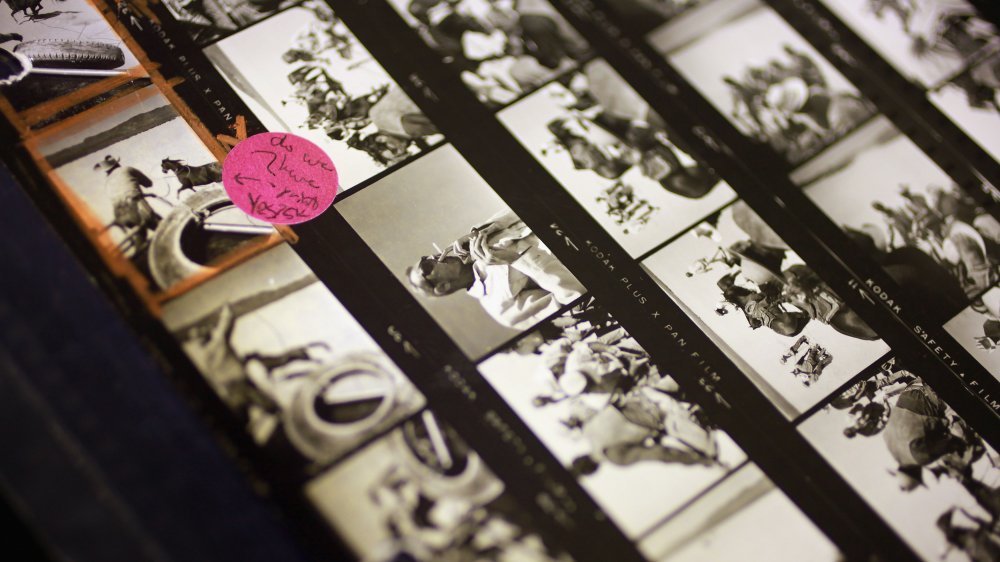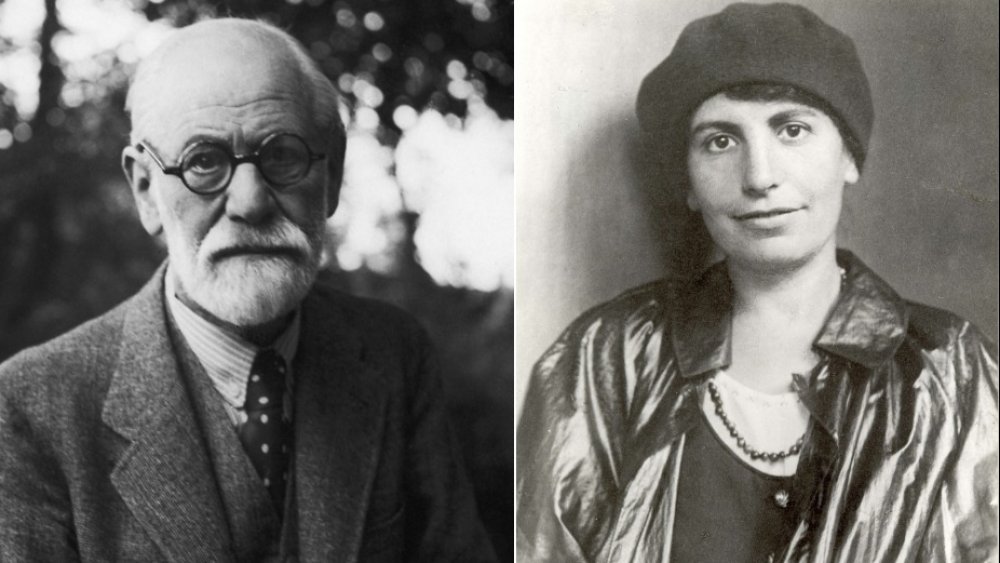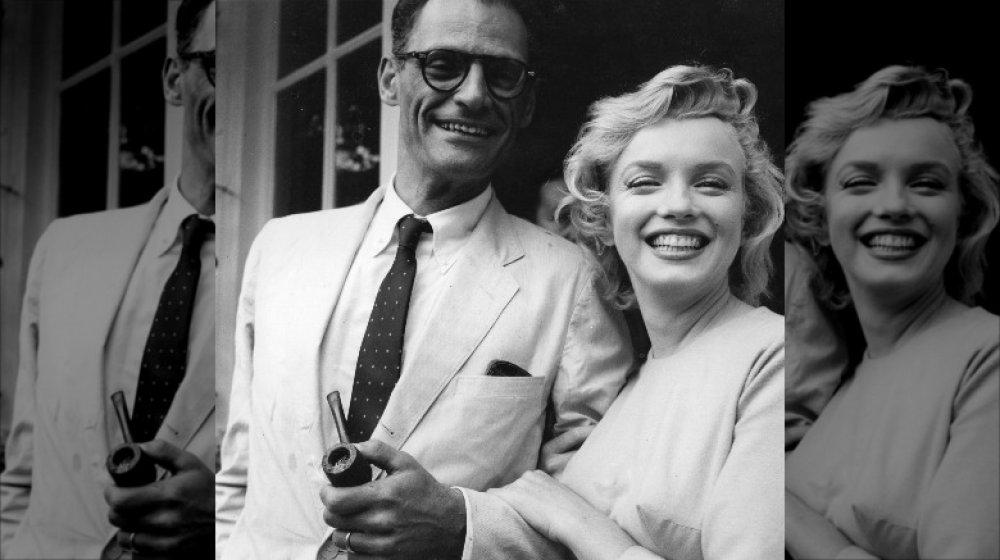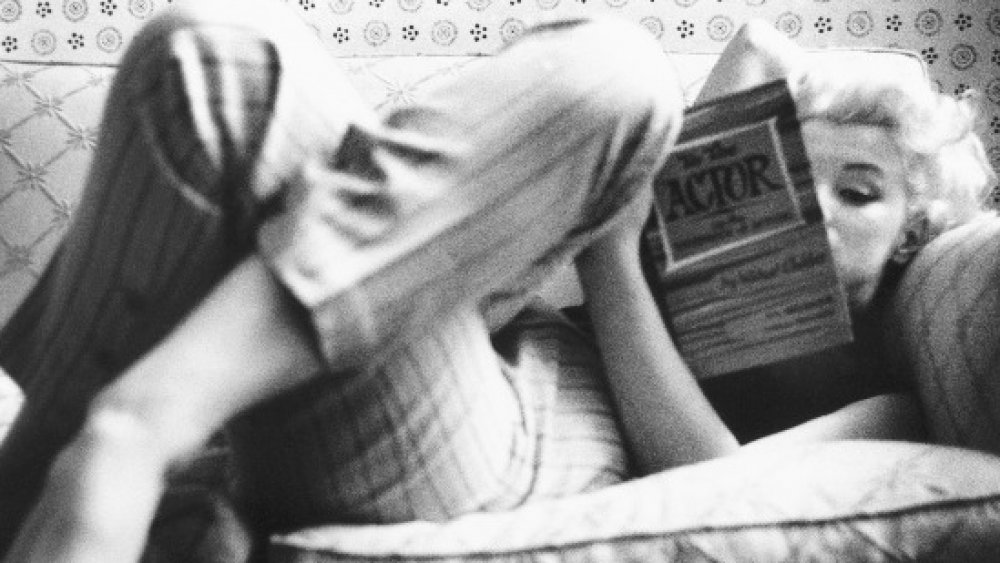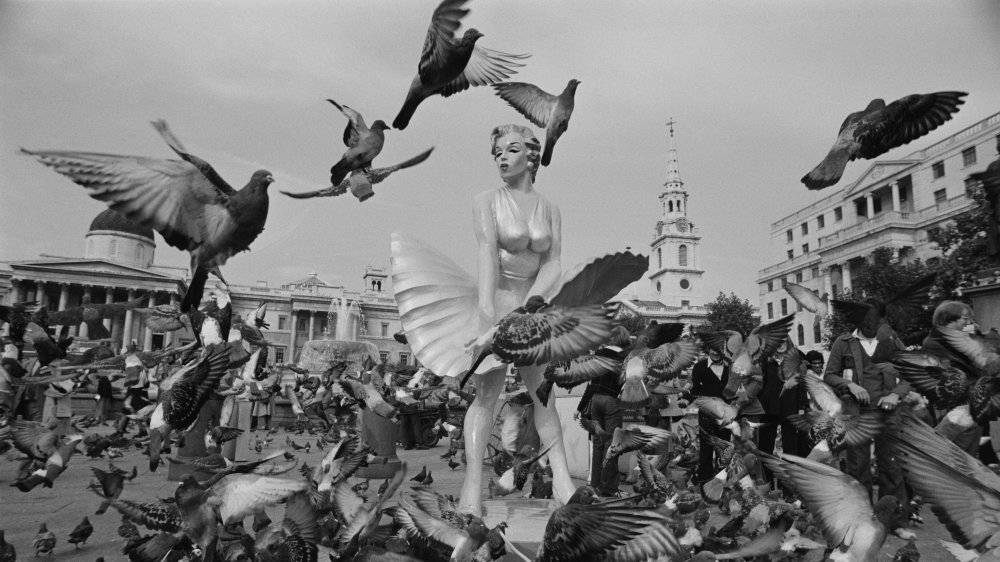Things You Didn't Know About Marilyn Monroe's Mysterious Death
Fellow pop-culture nerds and amateur Hollywood historians likely discovered the meaning of the word "icon" after seeing a picture of Marilyn Monroe. Whether it's that famous still from The Seven Year Itch of her billowing white skirt above a subway grate, posters of fellow icon James Dean and Monroe hung up in college dorms, or one of countless other photographs taken during her lifetime, Monroe's image — one of the most photographed (and reproduced) of the century — is almost synonymous with Hollywood itself.
Even if you've never seen Gentlemen Prefer Blondes, Some Like It Hot, The Misfits, or any of her other films or before-she-was-famous cameos, you know who Monroe is. Even more than that, you probably know about her death at the age of 36 — a tragic one that, like many an American legend, ultimately played a huge role in crystalizing her icon status in the first place.
Though her story's end is the stuff of high Hollywood drama — small-town girl finds stardom, becomes consumed by fame, and dies tragically — there's so much more to Monroe's death (and more importantly, her life) that you've never heard before, including mafia connections, social movements, the CIA, the stigmatization of mental health, American presidents, and Freudian analysis.
Think you know all about the mysterious death of Marilyn Monroe? Think again.
Marilyn Monroe's life was just as fascinating as her death
Before we launch into the intricacies of Marilyn Monroe's death, let's focus on the real reason she's become a Hollywood idol: her life. Born Norma Jeane Mortenson (later changed to Baker to reflect her mother's surname) on June 1, 1926 in Los Angeles, the would-be starlet's journey to Hollywood was so much more than commuting a few scant miles to Tinseltown.
Though Monroe's early childhood was purportedly happy, according to the biography Marilyn Monroe by Donald Spoto, her mother Gladys Baker was unable to care for her due to financial straits as a single mother, as well as her battle with diagnosed paranoid schizophrenia. Though young Norma periodically stayed with family friend Grace Goddard (who was eventually made her legal guardian), she spent the majority of her childhood in foster care and orphanages, during which she was reportedly sexually abused.
Per Spoto's book, Monroe entered into her first marriage at 16 to gain some stability after Goddard and her husband moved to West Virginia. She married 21-year-old James Dougherty, who eventually enlisted in the Merchant Marine. Monroe — who described the experience of a military housewife as a fate akin to "dying of boredom" — worked in a munitions factory after Dougherty was shipped out to the Pacific during World War II. It was this factory, strangely enough, that began Norma Jeane's journey to becoming Marilyn Monroe.
Marilyn Monroe wasn't born a star — she made herself one
During her employment at the Radioplane Company facility in the Van Nuys area of LA, Marilyn Monroe (who went by Norma Jeane Baker at the time) met photographer David Conover. Conover was commissioned by the U.S. Army to take photos of the women there for "morale-boosting" purposes, according to Donald Spoto's biography of the icon. After that, Monroe left her husband to pursue a career in modeling and dyed her hair its signature blonde. Her ambitions eventually emboldened a pivot to acting (via a screen test) and a six-month contract with one of Hollywood's major studios, 20th Century Fox.
Though you may assume a bonafide Hollywood contract would've solidified Monroe's entry into the auspices of the A-list, in reality, it was barely that. Monroe's first months as a contract star were overloaded with classes in singing, dancing, and acting. What followed were fledgling roles that were unsuccessful in launching her career, according to Spoto's book. Finding herself adrift after Fox declined to renew her contract in 1947, and again in 1948 after a brief placement at Columbia Pictures, Monroe's career seemed over before it even started — but the next, if not the best, was yet to come.
Marilyn Monroe finally found fame, but at a great cost
After parting ways with Columbia Pictures, Marilyn Monroe found herself under the guidance of Johnny Hyde, who was the vice president of the legendary William Morris talent agency, according to biographer Donald Spoto. Though purportedly consensual (but certainly ethically murky in retrospect, especially in the advent of the #MeToo movement), Hyde and Monroe entered into a sexual relationship. He also had his protégée go to extremes to attain stardom — including painful cosmetic surgery on her jaw and nose, per Spoto.
Some would argue, however, the work paid off: Monroe began to gain prominence due to a combination of small, but memorable comedic roles that showcased her abilities. These included the 1950 classic All About Eve. She also displayed a laissez-faire attitude when it came to modeling for artistic photographs while either nude or semi-nude. (While these photos only surfaced later in Monroe's career and her publicity team claimed she only consented to model out of necessity for quick cash, per biographer Lois Banner, this contributed to Monroe's influence on the 1960s sexual revolution after her death.)
The rest is more or less Hollywood history. That history includes Monroe's filmography paired with a marriage to baseball legend Joe DiMaggio, followed by her last marriage to American playwright Arthur Miller. From here, it's in unspooling Monroe's death that we can find the culmination of her life.
The way Marilyn Monroe died was open-ended... or was it?
According to official reports, what we know about the death of Marilyn Monroe is more concrete than not. As biographers Donald Spoto and Lois Banner both wrote in their respective texts, Monroe's maid Eunice Murray provided the crux of the timeline regarding the last hours of Monroe's life, which abruptly ended in her bedroom at her residence in Los Angeles' Brentwood neighborhood on Aug. 4, 1962.
As per Murray's account, she awoke with a start around 3 a.m., purportedly filled with unease. Finding a light coming from Monroe's room and the door locked, Murray proceeded to call the actress' psychiatrist, Dr. Ralph Greenson, who in turn called her physician, Dr. Hyman Engelberg. Engelberg was able to enter the room and find Monroe, who he pronounced dead at 3:50 a.m. before calling the police.
Toxicology reports and an autopsy later concluded Monroe's death was directly caused by a barbiturate overdose — powerful sedatives prescribed to her — and her death was officially ruled a probable suicide. However, the sequence of events, namely that there was a significant enough gap between when her body was discovered and when authorities were called, was enough to provide fodder for even the mildly curious, per History.com.
So, what exactly led to Monroe's death and what were the possible reasons for it? Let's take a look.
Some scientists think insomnia played a larger role in Marilyn Monroe's death
While official reports cite a barbiturate overdose as the main cause for Marilyn Monroe's death, some scientists think insomnia was the main culprit — sort of. According to a paper written for the 5th World Conference on Sleep Medicine in 2013, one scientist theorized that Monroe suffered from a clinical lack of sleep due to the value she placed on it to "help her look good at work." This — combined with a reported "context of stage fright," a case of jet lag after traveling back to the United States from Japan, and the "easy availability" of barbiturates — created a psychologically lethal admixture all its own.
So, does this mean Monroe's overdose might have been unintentional? Considering the concrete scientific evidence available and the fact that the actress was overprescribed medication while undergoing Freudian analysis, it's almost impossible to say. As the paper put it, though Monroe "thought she exercised a reasonable control on her drug intake," in actuality she had a discernible absence of "real medical control and the presence of spurious interests set the conditions for the advent of a grim outcome."
Did the CIA have anything to do with the death of Marilyn Monroe?
Considering we live in the golden age of conspiracy theories, it's no surprise that Marilyn Monroe's death has been the topic of many an armchair sleuth. What's a bit more surprising, however, is that Monroe's death has been fodder for conspiracists for decades, and that, much in the vein of conspiracy culture, one of the biggest theories goes straight to the top. Case in point? The recurring theory that Monroe's death was issued by the United States Central Intelligence Agency.
Though there are different iterations of the CIA assassination theory, the main gist is more or less this: Some believe Monroe was murdered by the government agency because she had intel on state secrets through a purported few sexual liaisons with President John F. Kennedy, as well as with his brother, politician Robert F. Kennedy.
It's true enough that government-related files on Monroe exist — as Newsweek reported, they were technically unsealed in 2017 under the discretion of President Donald Trump — but their very existence is a far cry from the conspiratorial. If anything, any sort of CIA-mandated hit on the Some Like It Hot icon is based on the most precarious of circumstantial evidence at best and far-flung, bombastic posing by tin-foil hatters at worst.
Marilyn Monroe's CIA connection is more fiction than fact
So, is there any substance to the theory that Marilyn Monroe's death was carried out by the CIA? Though an intriguing premise, the answer is probably not. But there's a reason — more than one — as to why this hypothesis still generates popularity decades later. Here's one example: In 2018, nonprofit watchdog PolitiFact flagged a hoax that surfaced via the website Science Vibe, which claimed a CIA agent named Normand Hodges confessed to being Monroe's murderer shortly before he died.
How was it so easy to identify the story as fabricated? As PolitiFact noted, "the supposed ex-CIA officer Normand Hodges is made up... [and] actually a man named Michael Tyrrell taken from a 2013 Guardian article about prisoners in hospitals." Despite this, the sensationalist headline, paired with the photo of a real person, helped the fake article spread on social media. When it comes to Monroe, Hollywood death sells — even more than 50 years after it happened. (It's also imperative to point out that these kinds of theories draw away attention from Monroe's grappling with her mental health — something still stigmatized today.)
And then, of course, there's always the mob.
Other people believe Marilyn Monroe was a mob hit
In 2019, actor Gianni Russo, most famous for his turn as Carlo Rizzi in 1972's The Godfather, went public with a disquieting allegation. Per Russo, Marilyn Monroe's death was the result of a mafia hit. According to Russo's memoir Hollywood Godfather: My Life in the Movies and the Mob, the actor — who claimed in a 2005 New York Times profile to have been in a sexual relationship with Monroe — alleged the actress' death was a mob-mandated assassination spurred by her connections to the Kennedys.
As Russo framed it, the mob purportedly had plans to film Monroe in a threesome with John F. Kennedy and Robert F. Kennedy. (And yes, you read correctly, an incestuous threesome). Per Russo, it was all in order to blackmail them into invading Cuba for the sake of the country's casinos, which were of interest to the criminal underground at large. When these plans were ultimately foiled, Monroe, in turn, threatened to leak the plot to the press — and the decision was made to silence her once and for all, according to Russo's claims.
The Marilyn Monroe mob hit theory is more than a little messy
In a slightly confusing twist, Gianni Russo further added that it was Robert F. Kennedy himself, not the organized crime syndicate, who made the call to kill the starlet by hiring a mobster to pull off the murder. As Russo, no stranger to lurid details, put it in an interview with the New York Post: "A guy known as The Doctor — a killer for hire and an actual MD; he had done major hits for the mob — injected air into the vein near Marilyn's pubic region. She died of an embolism, but it looked like drugs to the coroner."
So, to recap: Russo claimed that a Kennedy hired a mafioso hitman to kill Monroe. "It had to be Bobby," he added. "No one else would kill her. The mob would not have done it. They liked her." Russo might've staked his claims on a supposed relationship with Monroe (which Russo alleged took place when he was 33 and she was 16) and purported personal ties to the mafia, but his theories seem fantastical at best. Despite skepticism, others have championed them, including biographer Danforth Prince, who most recently reiterated his stance in the podcast series The Killing of Marilyn Monroe (via Us Weekly).
There's another person worth exploring in the conversation about Monroe's death. That person is the actress' ex-husband Arthur Miller, who seemingly reflected on their relationship through his work.
Arthur Miller and Marilyn Monroe's only collaboration foreshadowed her death
Arthur Miller's only screenplay was also Marilyn Monroe's very last movie — one that turned out to be a harbinger of things to come. Though ostensibly a Western, 1961's The Misfits — directed by John Huston and starring Montgomery Clift, Clark Gable, and Monroe — it's also a thinly veiled (though elegiac) metaphor for Monroe and Miller's unraveling marriage.
Filming The Misfits was also when their marriage finally fell apart, as Miller met Austrian photographer Inge Morath, who was hired to document the shoot. Though Miller himself never confirmed whether a relationship between the two began then, it did occur while Miller was officially married to Monroe. Monroe was difficult to work with on set, according to Huston's 1981 interview with Rolling Stone, and was undoubtedly affected by the emotional toll Miller's increasing distance was taking on her.
According to Huston, Monroe was using prescription pills and drinking profusely after each workday, and filming came to a halt for two weeks after she required hospitalization. Of the experience, Huston said in retrospect that Monroe "was incapable of rescuing herself or of being rescued by anyone else," and was "absolutely certain that she was doomed." Less than a year later, Monroe was dead.
During treatment, Marilyn Monroe became fascinated with Freud
In a letter Marilyn Monroe penned to psychiatrist Dr. Ralph Greenson while institutionalized for "mental exhaustion" at the Payne-Whitney Psychiatric Clinic in New York, the actress — who completed The Misfits only months before — confided she'd begun reading Sigmund Freud's work. In that same letter, she described a photo of Freud, the father of psychology, as someone who "died a disappointed man."
This encounter with Freud was hardly Monroe's first. As a 2010 Vanity Fair feature pointed out, psychoanalysis was par for the course when it came to students of practitioner and actor Lee Strasberg, who created the concept of method acting. Though already a star by the time she enrolled in Strasberg's Actors Studio in 1955, Monroe took her courses seriously and sought out the care of psychiatrists, the last of which was Greenson. Greenson — who was trained specifically in the field of Freudian psychoanalysis — was even a friend of Freud's daughter Anna, a major figure in psychology in her own right.
Unfortunately, Greenson decided to take his treatment plan with Monroe a step further than conventional methods — an approach termed "adoption therapy," in which he presented himself as a surrogate father figure for the star, and now considered highly unethical. As the Telegraph summarized in 2010, Monroe's biographers "have implicated Greenson in Marilyn's death, characterizing him as a proprietary control freak... who exercised a sinister power over the bleached legend."
Arthur Miller wrote a play seemingly about wife Marilyn Monroe's death
Though their marriage unraveled during filming for Marilyn Monroe's last movie The Misfits, Arthur Miller was evidently enraged by the public's posthumous treatment of his ex-wife. In an unpublished essay he wrote in 1962 (via the Guardian), Miller condemned "public mourners," who "stand there weeping and gawking, glad that it is not you going into the earth, glad that it is this lovely girl who at last you killed."
It wasn't the last time Miller wrote about Monroe after her death. His 1964 play After the Fall, perhaps one of his most directly autobiographical dramas, features a character named Maggie who resembles his late wife in a number of ways, including her career as an actress and her battles with her mental health (and ultimately, her death by an overdose).
A revival of the play on Broadway occurred the same year as his final play — Finish the Picture, also one of his most autobiographical plays, which, as Playbill reported, was about the filming of The Misfits — made its debut in Chicago. Like After the Fall, a Monroe stand-in named Kitty is also present in the play, though never appears onstage. Miller died a year later in 2005.
The ways mental health contributed to Marilyn Monroe's death are complex
Though some scientists suggested insomnia as a force behind Marilyn Monroe's death, historians and cultural critics are finding that even pointing to declining mental health as a factor is much more nuanced. In a three-part mini-series on Monroe on her podcast You Must Remember This, journalist and Hollywood historian Karina Longworth pointed to mismanagement of Monroe's prescribed medications. As per Longworth, this included how one of the pill prescriptions "that would eventually kill her [was prescribed] to manage severe menstrual pain." The reason? It was intended to treat a diagnosis of endometriosis.
Of course, it's not the treatment of endometriosis (a painful chronic condition which is still hugely ignored and dismissed by a large swathe of the medical professional community), but instead its relation to Monroe's ability to give birth, that Monroe psychologically connected to painful abuse from her past. It's a chunk of Monroe's background that, as Ringer writer Lindsay Zolandz, pointed out has been "cruelly doubted" and a "tragedy [that, along with her endometriosis] was inherently linked to her femininity."
A misunderstanding of this possibly contributed to Monroe's unspooling. As Longworth put it, "at that point, nobody was able to see that so many of the things that made Marilyn 'Marilyn,”' which included "the childlike voice and perspective, the lifelong search for male protectors." As Longworth summarized, "all of these things were, in fact, textbook long-term symptoms of child abuse."
Marilyn Monroe's legacy has made her immortal
Though Marilyn Monroe indeed died on that fateful night in 1962, the Hollywood icon has managed to overcome death in the sense that her image, her memorable performances, and her one-of-a-kind enigmatic presence both on-screen and off have made her seem immortal. While her tragic death might have catapulted Monroe into a type of Hollywood pantheon defined by self-prescribed mythology, it's everything that led up to it that makes it impossible to forget her smile, her laugh, and her life unto itself.
This self-same fascination has resulted in hundreds of books on her life and afterlife, the Smithsonian declaring her one of the most influential Americans of all time, and her image inspiring artists as important as Andy Warhol and influencing cultural movers and shakers as big as Madonna. Though Marilyn Monroe might have died more than 50 years ago, it's her life, not her death, that have ensured that in more ways than one, she'll never be forgotten.
If you or someone you know is struggling with substance abuse and mental health, please contact SAMHSA's 24-hour National Helpline at 1-800-662-HELP (4357).

